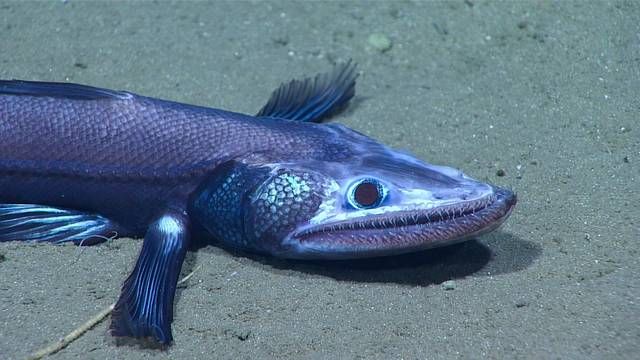Ocean Floor Deep Sea Organisms

Most deep sea organisms would die in tropical temperatures or if they were kept in an aquarium.
Ocean floor deep sea organisms. These scavengers are vital to the deep sea habitat as they help clean up the ocean floor. Most creatures have to depend on food floating down from above. 1 terrigenous describes the sediment derived from the. The creatures at the bottom of the ocean 01 06 scientists have brought back to life microbes found in 100 million year old sediment from deep beneath the ocean floor.
Brine pools are commonly found below polar sea ice and in the deep ocean. The term deep sea creature refers to organisms that live below the photic zone of the ocean. Brine pools below sea ice form through a process called brine rejection. The deep sea dragonfish is another deep sea creature that uses its oversized fang like teeth to grab prey in the deep dark environs of its habitat.
Contrary to popular belief most of the sea floor known as the open ocean is not really a habitat for animals just a place they pass by on the way to somewhere else. Deep sea creatures photos adaptation is the name of the game when you live thousands of feet below the water s surface. In most of the world the ocean floor is very deep averaging 3 790 meters 12 430 ft in depth. Sediments in the seabed vary diversely in their origin from eroded land materials carried into the ocean by rivers or wind flow waste and decompositions of sea animals and precipitation of chemicals within the sea water itself including some from outer space.
A consequence of the slow rate of living deep sea and arctic animals tend to grow very slowly. These creatures live in very demanding environments. A brine pool is a volume of brine collected in a seafloor depression. There are four basic types of sediment of the sea floor.
Nearly half of the world s sea floors are over 3 000 meters 9 800 ft deep. In fact some arctic deep sea organisms grow as much in 10 years as some tropical organisms grow in one year. These creatures must survive in extremely harsh conditions such as hundreds of bars of pressure small amounts of oxygen very little food no sunlight and constant extreme cold. These pools are dense bodies of water that have a salinity three to eight times greater than the surrounding ocean.
See how these deep sea denizens make the most of their deep dark home. Many of these newly discovered species live deep on the ocean floor in unique habitats that depend on plate movement underwater volcanoes and cold water seeps. For deep sea brine pools the salt can come from one of two. They wanted to understand the impacts of deep sea mining on microbial ecosystems so we can make informed decisions about how best to manage deep sea mining projects.
New species are discovered in the ocean each year by marine biologists and other ocean scientists.


















